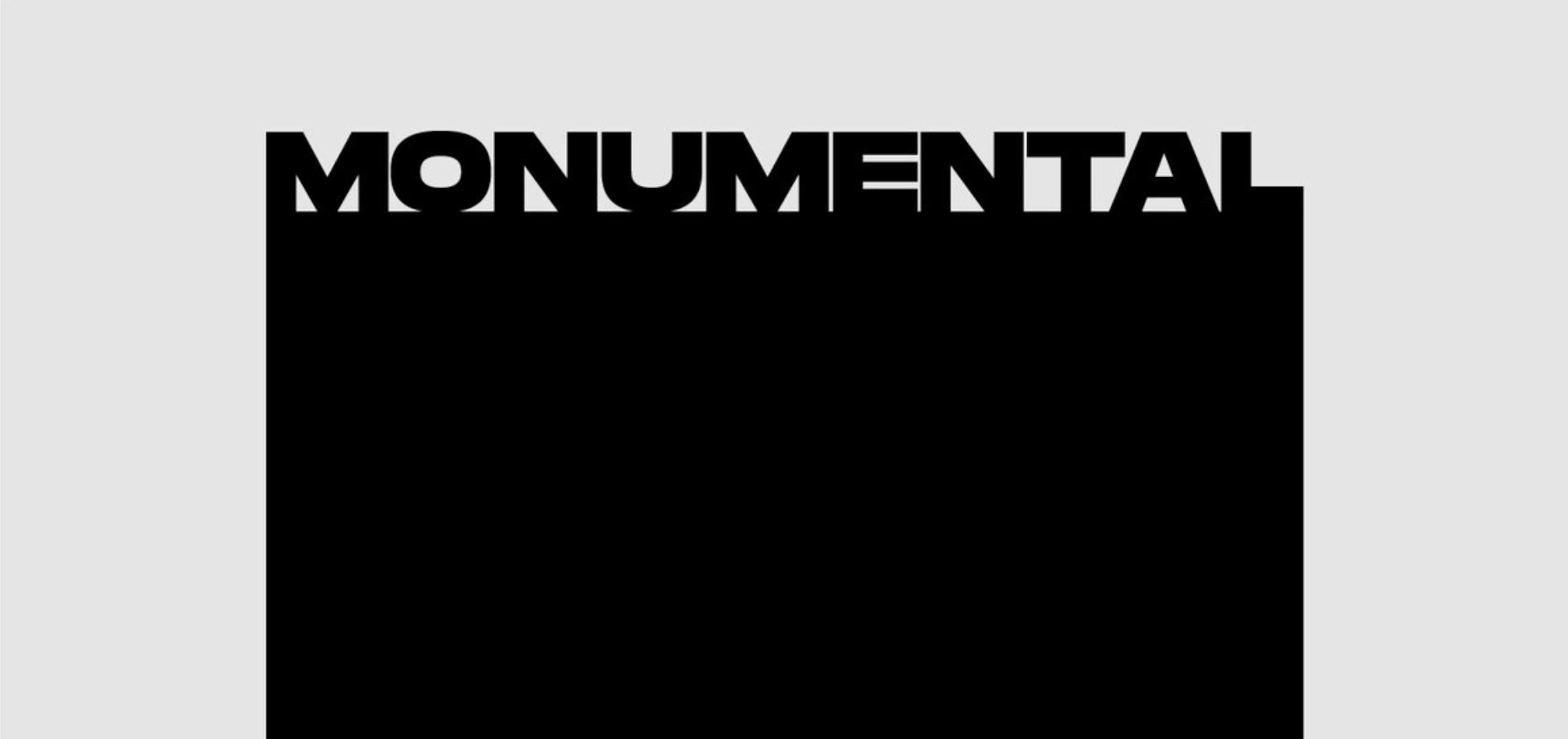Black Cube’s ED Discusses the Concept of MONUMENTAL

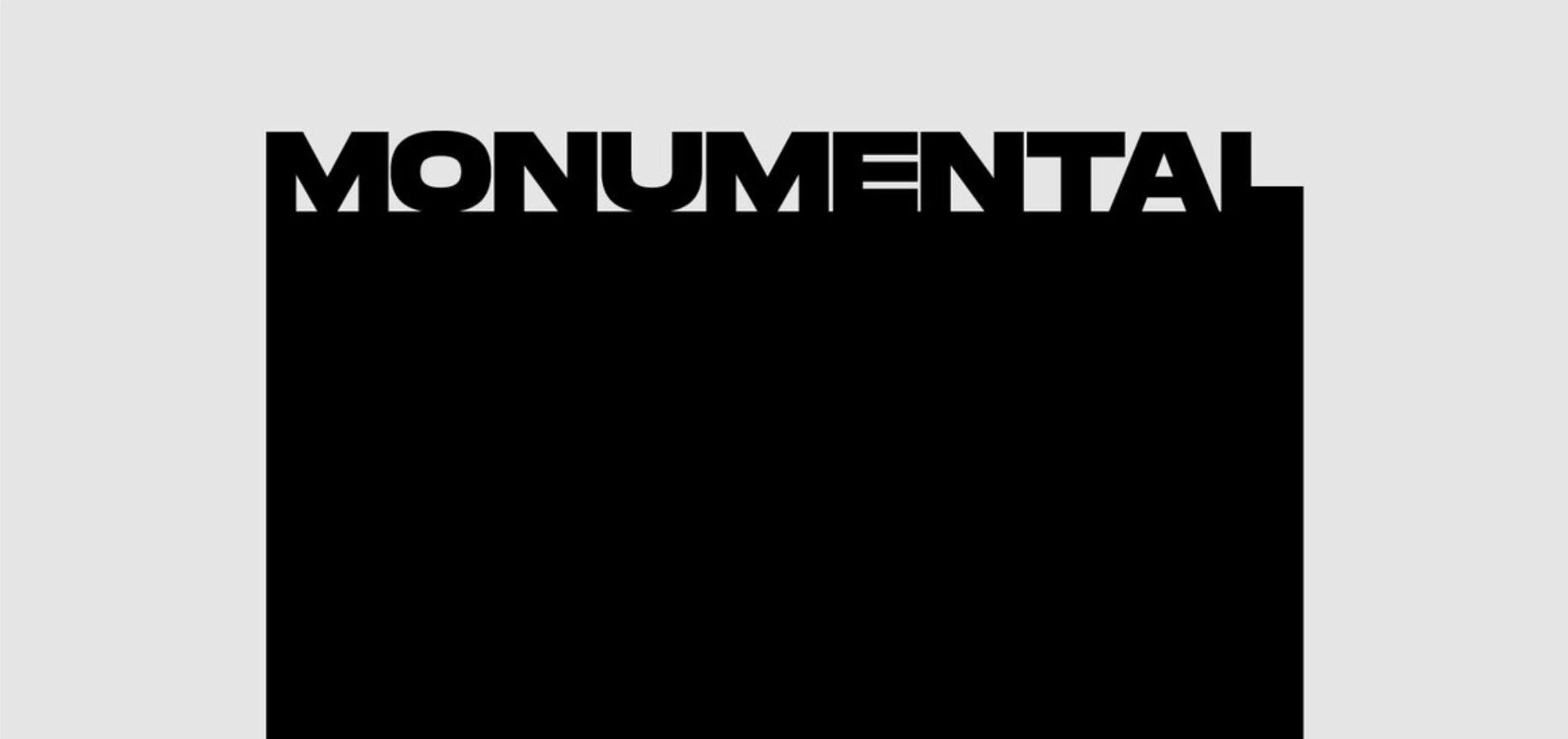
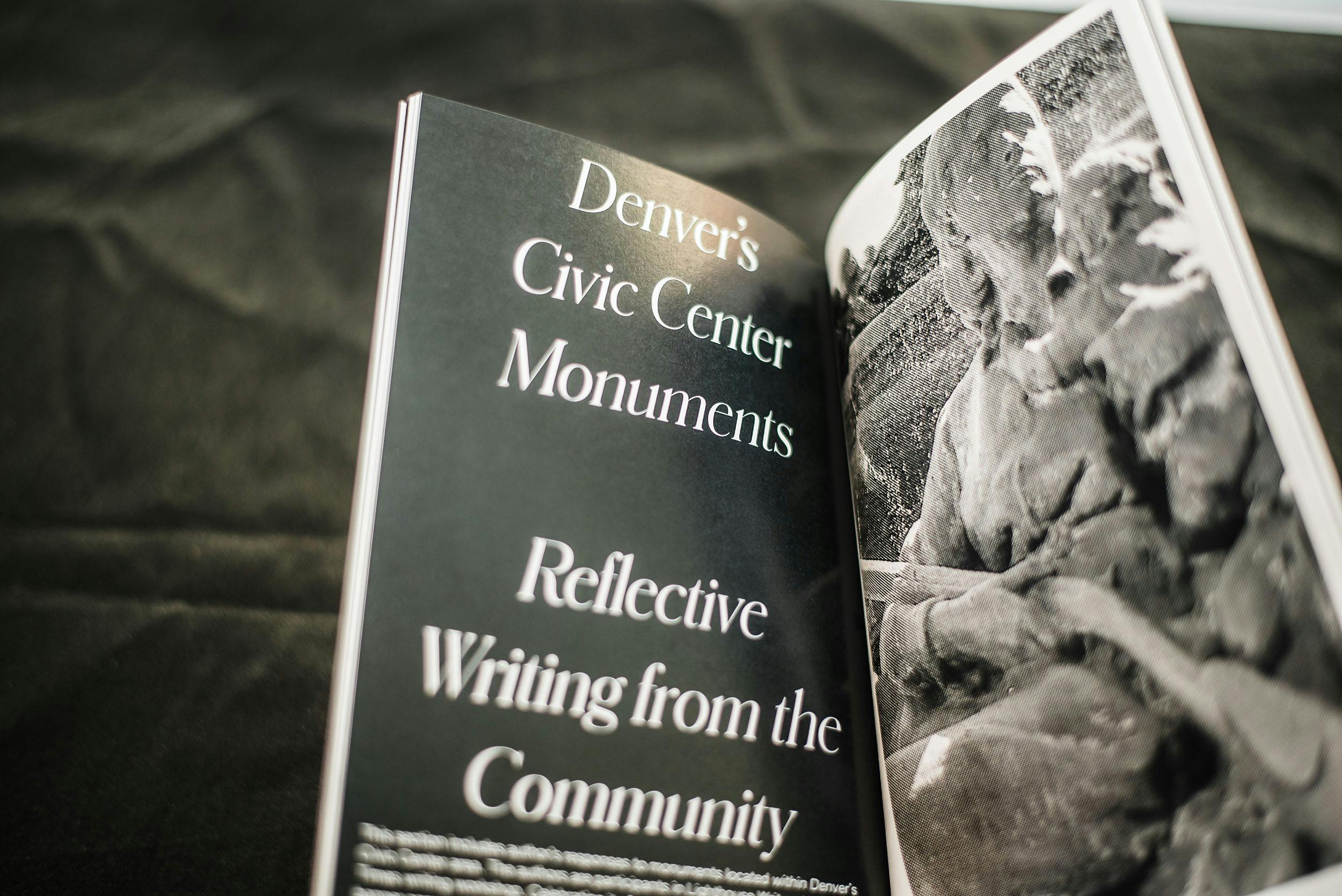
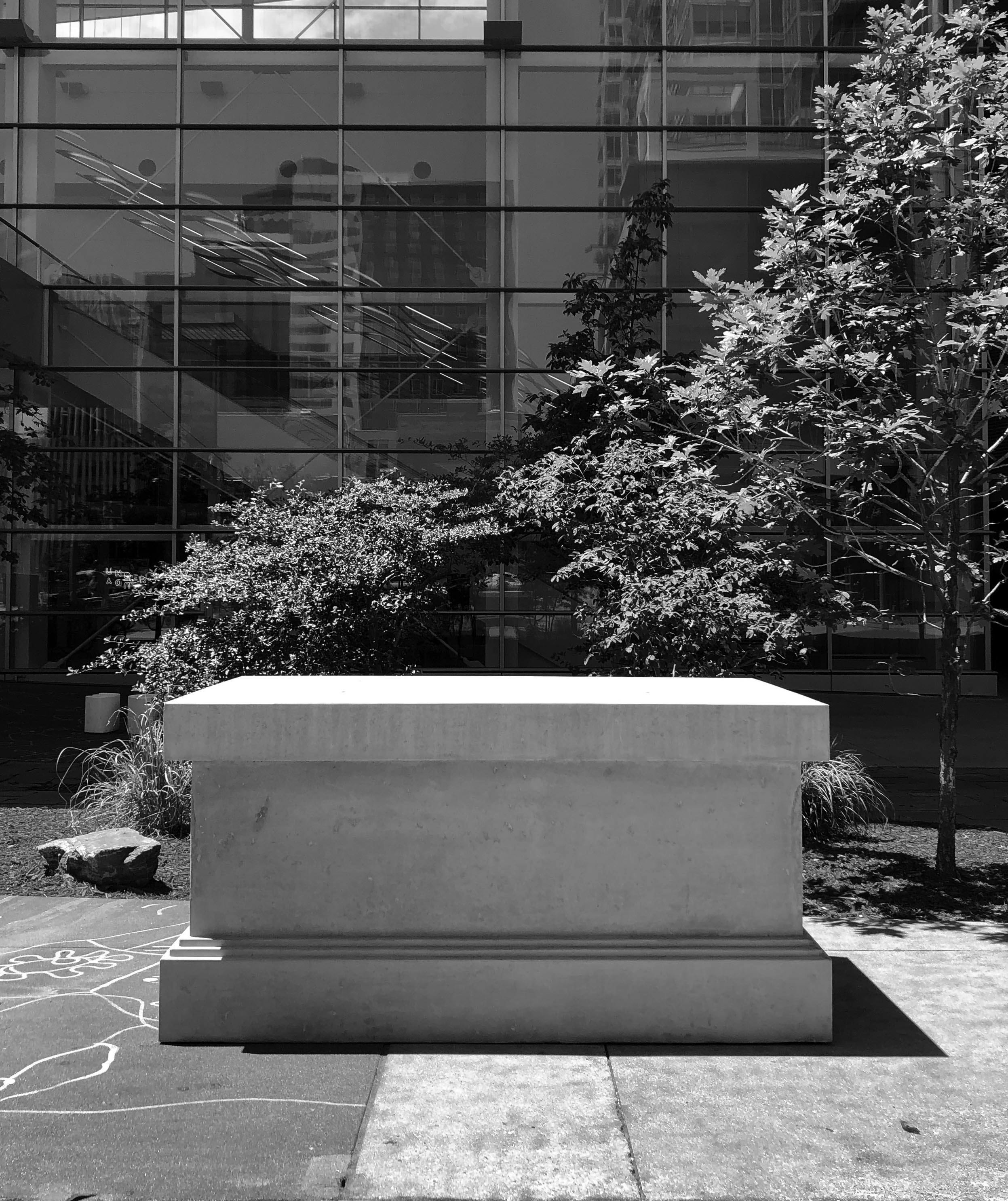
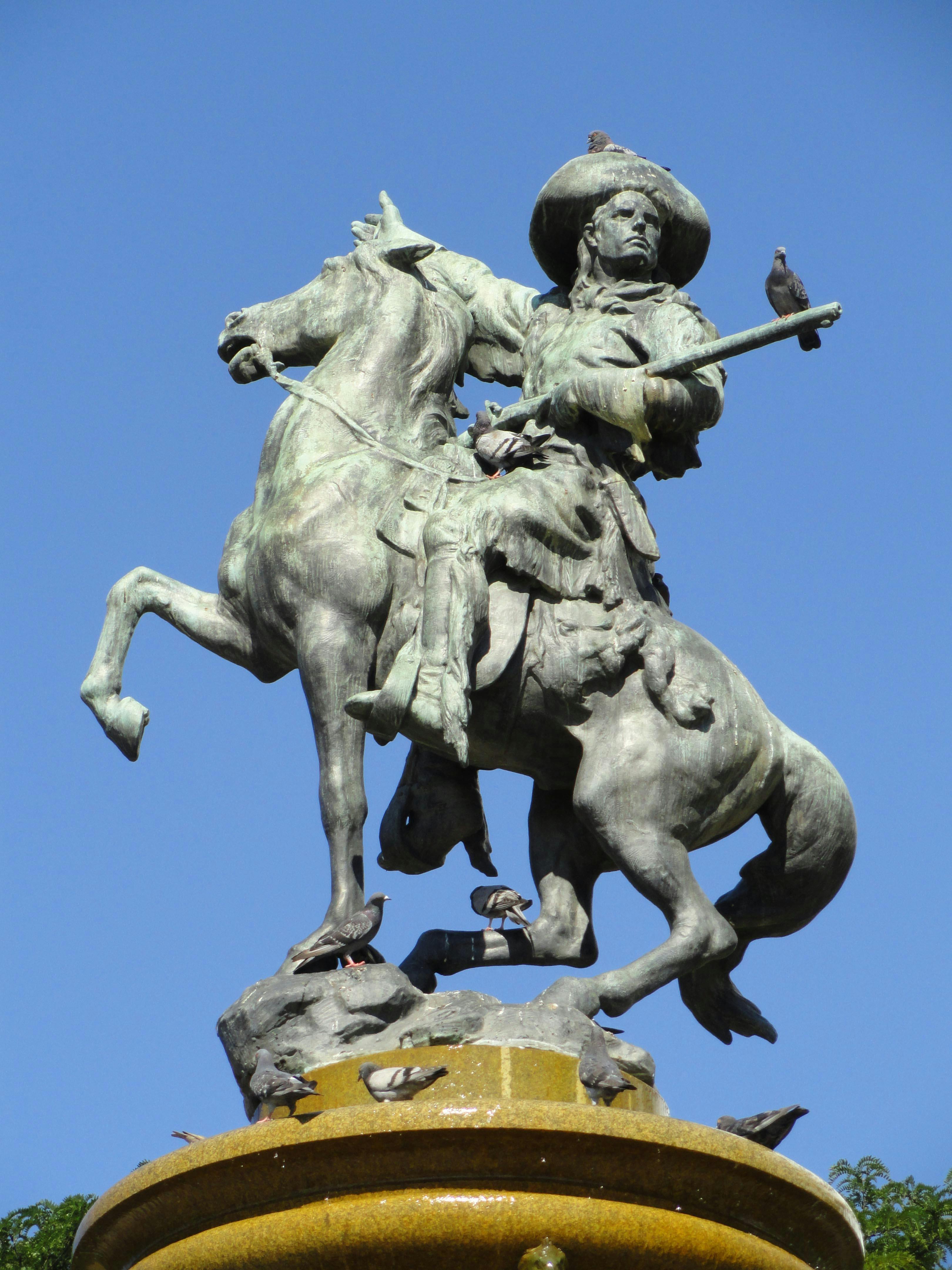
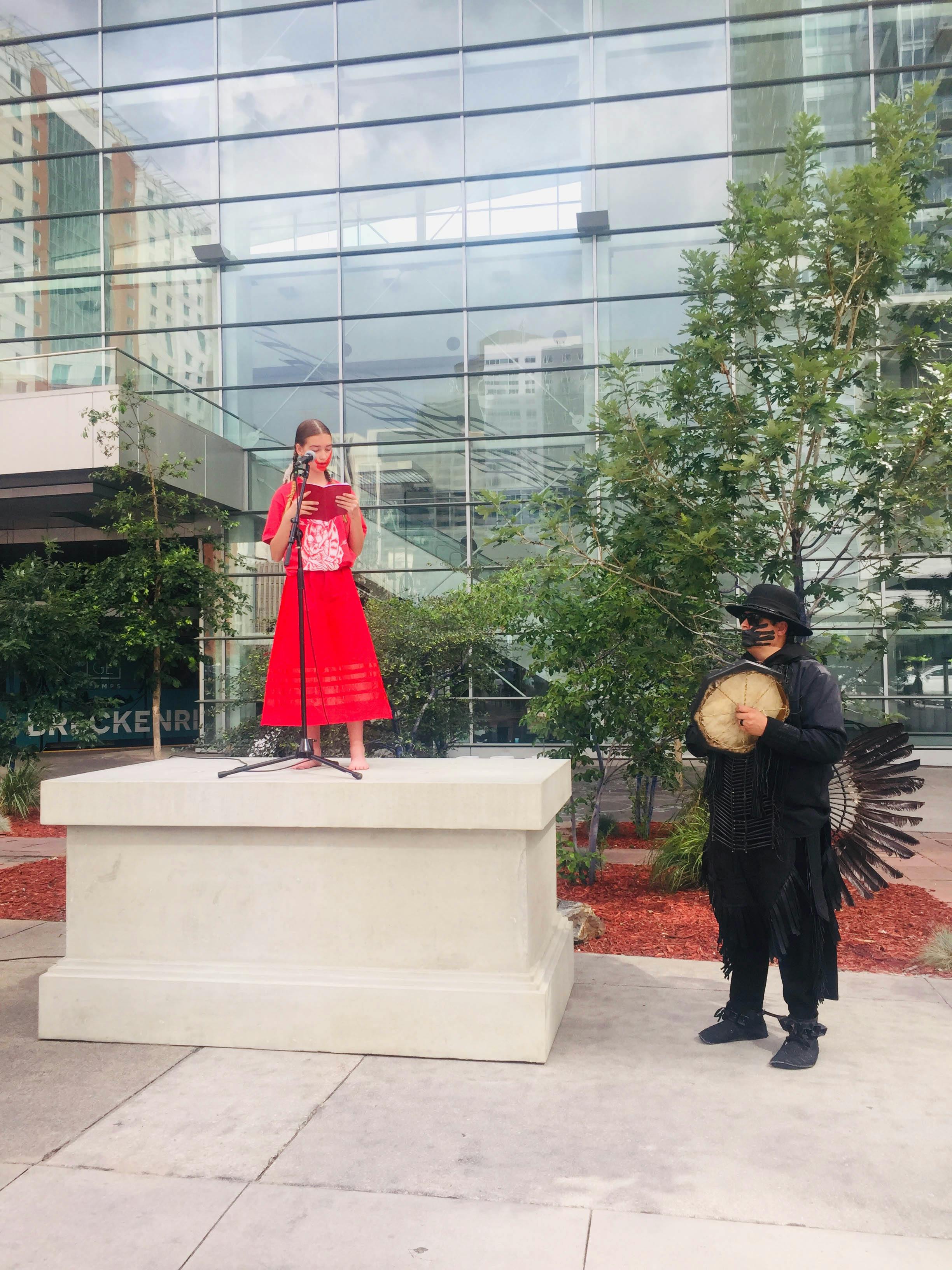

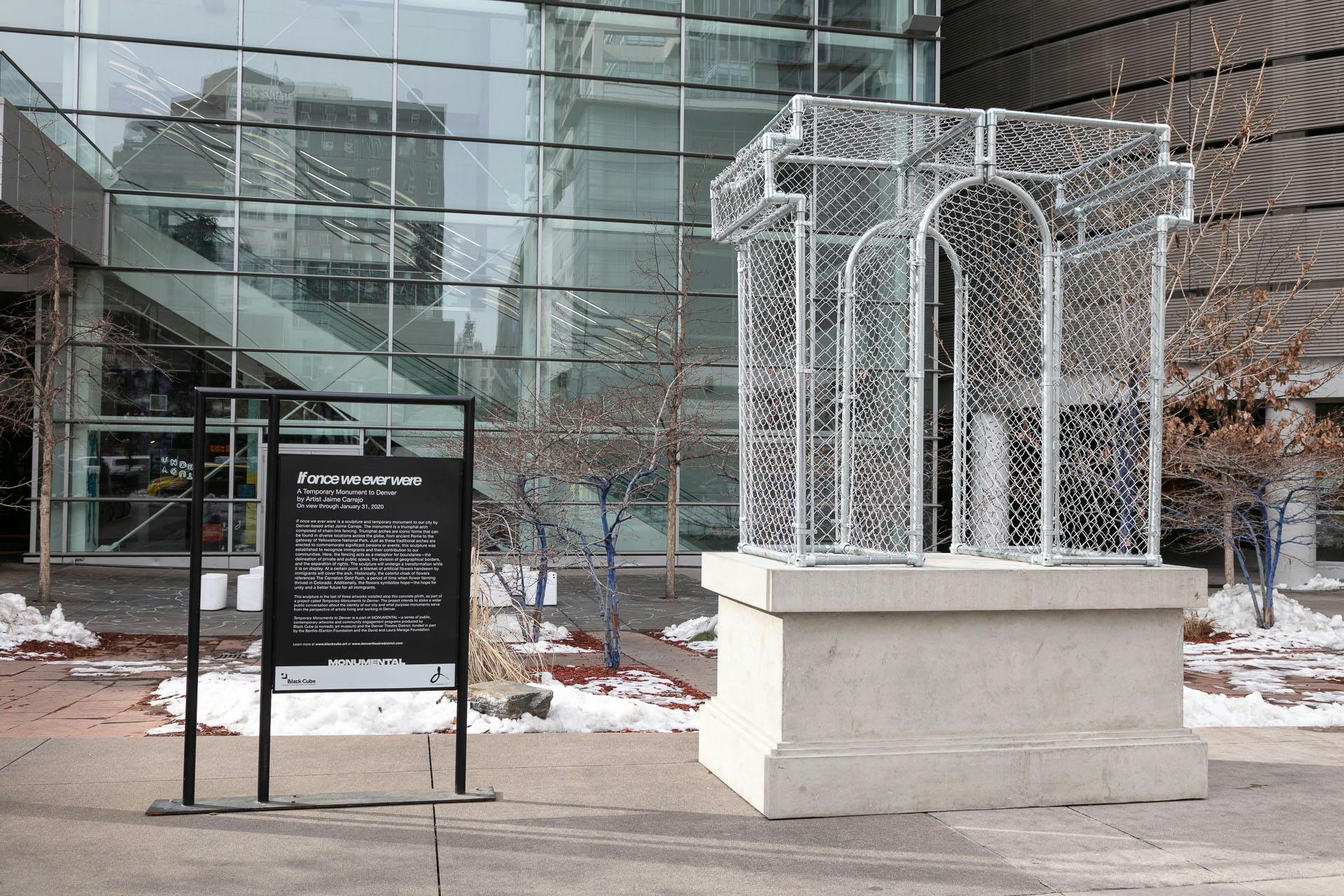

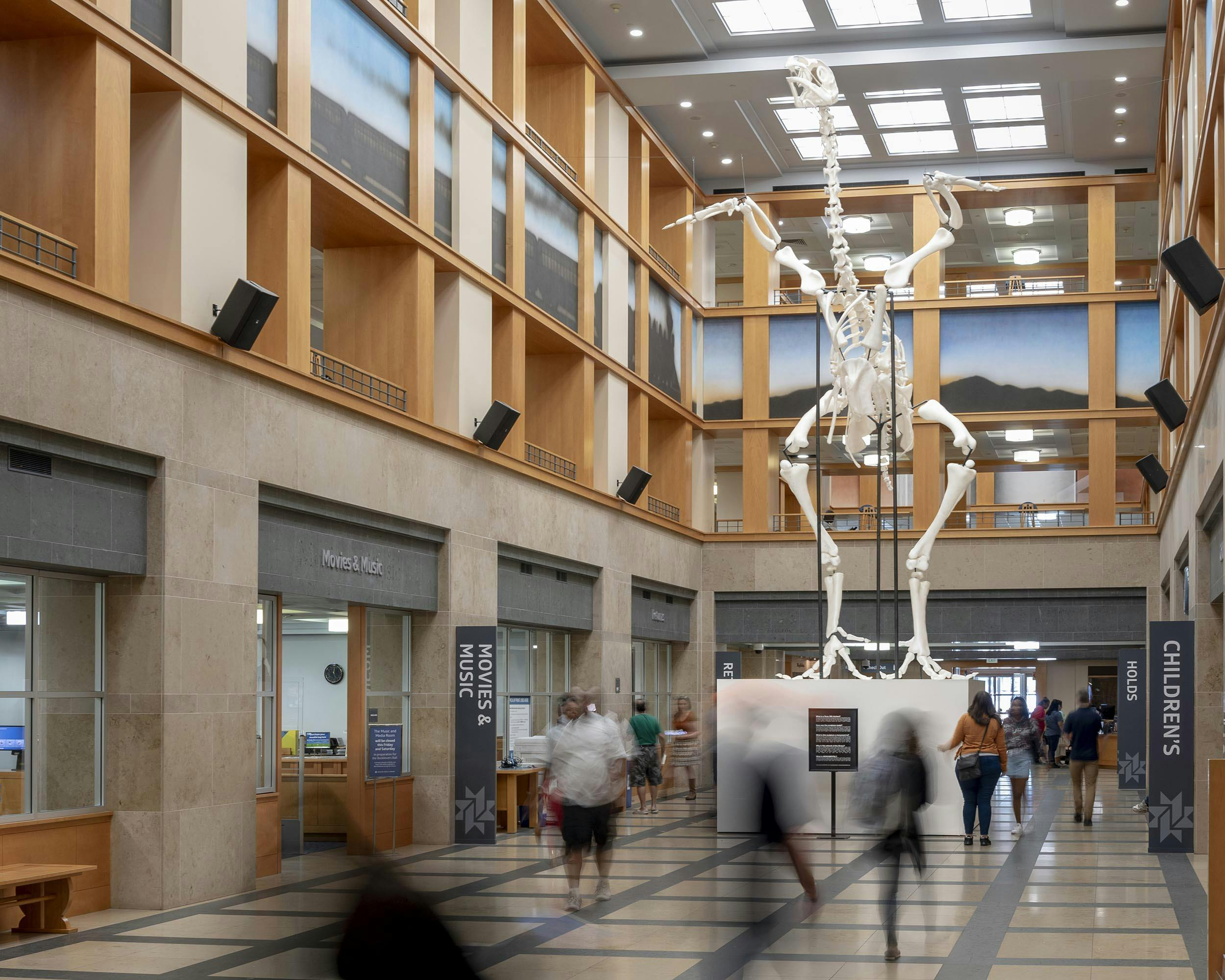
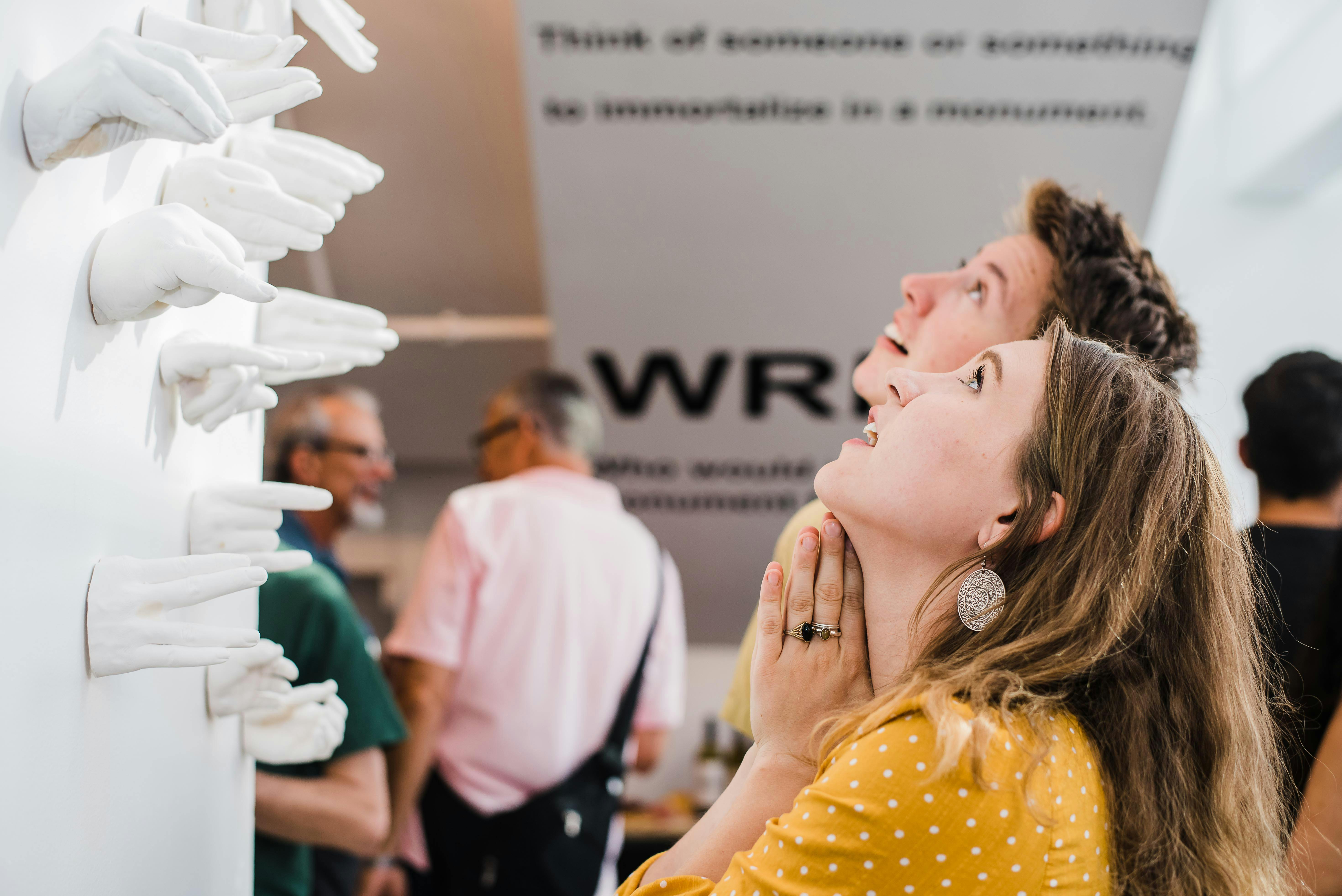
Black Cube’s Curatorial Intern, Livy Snyder, interviews Black Cube’s Executive Director + Chief Curator, Cortney Lane Stell, about MONUMENTAL—a temporary rotating exhibition of monuments in Denver, Colorado.
Black Cube’s ED Discusses the Concept of MONUMENTAL
For several years, the removal of controversial monuments were decisions made by Historical Commissions and Mayoral offices. In response, artists and art historians have fostered forums, developed spaces, and created artworks to address the complicated issues around preserving and replacing historical artifacts. Temporary monuments have been a successful and innovative approach to disrupt and revise old patterns of collective memory connected to controversial monuments.
In response to the current sociopolitical climate of monument removal, Director and Chief Curator of Black Cube, Cortney Lane Stell, conceived the recent temporary monuments exhibit, MONUMENTAL, in partnership with the Denver Theatre District. Stell commissioned a series of thought-provoking artworks that instigate a wider public discussion about public monuments and their relationship to the identity of Denver, Colorado.
Livy Snyder: Why focus on monuments now? And why in Denver?
Cortney Lane Stell: The wider United States has been having a conversation about public monuments, particularly confederate monuments. It has been an interesting and dynamic debate to witness our communities wrestle with complicated histories and how they relate to present day society. It has brought about very important conversations with relation to cities and their identities. So, it was in the water, so to say. Furthermore, given the growth Denver has experienced over the past few years, and the subsequent changes in demographics, it felt like an apt moment to bring about a wider conversation about the images that represent our city. Given that we are a contemporary arts organization, we wanted to have this conversation with artists through commissioning new artworks that respond to the concept.
LS: MONUMENTAL brings about this “wider conversation” in the Denver area. What does the project include? What was your curatorial approach?
CLS: The project includes local, national, and international artists, all of whom created temporary works that speak to aspects of public statues, monuments, and icons. This temporary public art project, which is a partnership with the Denver Theatre District, is curated and developed by Black Cube, and produced collaboratively by both organizations.
For the international aspect, I set out looking for a project that would speak to a wider lens from a global perspective. Nationally, I sought out a project that would look at a national identity, specifically an artwork that would offer reflection from the perspective of American identity. Locally, we approached the project from a “call for entries” approach, in order to offer our community a wider and more democratic avenue to respond with ideas for monuments to our city.
Lastly, we wanted to rope in some additional community programming, so we partnered with the Denver Theatre District’s arts incubator space, Understudy, to produce a monument workshop (with artist Rian Keranne) and a zine publication (with Lighthouse Writers Workshop). The additional programming was intended to help spur a wider community dialogue on the subject matter.
LS: What do Denver’s current public monuments reflect?
CLS: Well, that’s a tricky question because we do not have a public archive of this information. In fact, a lot of ‘monuments’ in our city are on private land and not publicly recorded. I think, generally, we see a lot of the same thing we see in other cities; meaning, lots of bronze statuary honoring men… mostly businessmen or political leaders. In Denver, we also have a good chunk of Western influenced monuments—think of the horse and frontiersman of the Pioneer Monument off of Colfax and Broadway. Meredith Sell wrote a nice article in 5280 magazine that has a concise, but interesting, review on the subject as it relates to female representation.
LS: You mentioned MONUMENTAL includes local, national, and international artists. The local aspect involves a project called Temporary Monuments to Denver. Can you describe this project?
CLS: The local artist aspect involves the loose charge for artists to produce a monument to their city, Denver. Each artist was asked to produce an artwork for a large-scale, outdoor, concrete monument base, positioned outside of the Colorado Convention Center. We commissioned three artworks by three separate artists, in chronological order: Nikki Pike, Noah Manos, and Jaime Carrejo.
Nikki Pike produced two artworks for her temporary monument to Denver. The main work was a series of performances that inaugurated the entire project. For these performances, Nikki decided to reallocate the material budget for her project and pay underrepresented local creatives to engage the monument base for at least 2 minutes on opening day. She had a fairly diverse group of performers, including a Native American teen and a transgender individual, with content ranging from music to poetry. It was lovely to see Nikki empower her community, and particularly individuals who are not typically celebrated in public monuments. For the remainder of her exhibition, she placed a text-based sculpture with the phrase “WE the privileged.” The sculpture took visual reference from Robert Indiana’s iconic LOVE sculpture and paired that with a provoking remix of the preamble of the U.S. Constitution “We the people.”
Noah Manos’ work Our House was a salt sculpture of a Denver Square-style house, intended to erode. Salt is an essential nutrient and has been used since ancient times in activities ranging from cooking to religious traditions. From an expanded perspective, I was interested in a monument that was meant to disintegrate because it contrasts the most common idea of a monument as something permanent and enduring. The house referenced in the sculpture is the artist’s home, sketched from memory. Within the interior of the salt house, the artist placed an acrylic pyramid containing two materials: anthracite (or raw coal) and terracotta clay slabs that hold pressings from debris gathered from local construction dumpsters. The work speaks to Denver’s growth, the illusive nature of memory, permanence, and materiality.
Jaime Carrejo’s monument, which is currently in production, is a triumphal arch composed out of chain link fencing. Triumphal arches are erected to celebrate a person or commemorate a significant event. In this work, the artist is constructing a monument to immigrants—past and present—paying homage to the immagrents who have helped build our cities. Triumphal arches are often associated with the Roman Empire, but can be found throughout the United States (my favorite is in Montana at the entrance to Yosemite). Developed by a process based on cloth weaving machines, chain link fencing is inexpensive and modular, which makes installing lengthy stretches of fencing relatively quick and easy. The fencing material carries a strong conceptual weight when paired with a conversation about immigration. Chain link fencing is lauded for security purposes, as its design provides easy access control and clear visibility – think of its current use in detention camps along the U.S.-Mexico border. Jaime’s installation, like the others, will change over time. Two weeks after the sculpture is installed, the artist will cloak the arch with a hand-sewn blanket of artificial carnation flowers. The carnation flowers reference Denver’s Carnation Gold Rush, the post-World War II period when the Denver Metro Area was home to a thriving carnation industry. This industry, which was once the largest producer of carnations in the world, took use of a lot of immigrant labor. I’m still digesting this work, as it is not yet complete, but I hope this gives you at least a sense of it.
LS: You then broaden the scope to include works by national and international artists. Tell us about their role in MONUMENTAL.
CS: The national artwork is a tryptic of billboards by the artist collective For Freedoms, which shows three iterations of Norman Rockwell’s “Freedom of Speech” painting. This work is part of a larger series that reflects on Rockwell’s Four Freedoms (Freedom of Speech, Freedom from Fear, Freedom from Want, and Freedom of Worship). I chose to focus on the “Freedom of Speech” painting, as I felt the conversation was most connected to public monuments. Essentially, the artist collective shot a series of photographs that appropriated the compositions and settings of Rockwell’s works. The artists replaced the white males depicted in the Rockwell works with diverse individuals who better represent our current population as a whole (and not just ethnically diverse, but age and gender were also factors). I decided to focus on two-dimensional work for several reasons. Mainly, I feel that our nation is so big that the icons and monuments that pervade our society are decimated in different ways than public monuments. Here in Denver, being a part of the wider country is more about cultural values, celebrated histories, and public icons. For example, the Rockwell works were largely not experienced as paintings—their power came in their circulation in The Saturday Evening Post, then later on war bonds and stamps. So, given all of this, I felt that the For Freedoms version of the “Freedom of Speech” could help encourage a wider conversation about what we think our culture looks like, if the freedom of speech is available to us all equally, and the historical context of these two topics.
Now, onto the international perspective. I set out to select a work that could somehow speak to our species, meaning humanity as a whole. Andreas Greiner’s Monument for the 308 is a 24 foot-tall sculpture of a broiler chicken skeleton and is a monument to the human impact on our planet. The use of this animal is in line with scholarly conversations about the Anthropocene, the proposed new geological era that marks the overwhelming impact of humans on the Earth’s surface geological processes. By producing a chicken, dinosaur-scale, the work refrences dinousours and how they representing past a geologic era (thus inferring a connection to our current era). So, why the chicken, you may ask? The broiler (or 308) chicken is the most commonly eaten chicken. It has no natural habitat and it’s eaten world-wide. We have genetically modified this chicken to grow fast and produce a lot of meat. Years from now, its plentiful bones will be found en masse in the sedimentary layers of landfills across the world. Greiner aptly drew a comparison to the monuments of previous geologic eras (i.e. dinosaurs) to draw powerful parallels. This chicken sculpture is also 3D printed. This technology seems god-like, as we are able to produce a physical object out of an almost objectless digital file. In a similar god-like manner, we have also created an animal that is more of a commodity than an animal. It is a species that cannot live on its own. This is made evident by another work by Greiner, in which he adopted a 308 chicken and placed it in a petting zoo to have a better life. Much to his surprise, the chicken quickly died of a heart attack as it was not engineered to survive in a free range environment.
This Vox article and this article have more statistical information on the subject matter.
LS: Why work with artists on this subject matter?
CLS: Because contemporary artists help us digest, reflect, or think of the world in other ways.
Denver is growing, and always changing, and it seems like an apt moment to have artists help us think about our community, what the aesthetics of our city say about our values, and our relationship to our wider country, and beyond.
It’s also important to note that we approached this subject through a different structure by it being a curatorial process. Monuments normally go through a bureaucratic process filled with committees, public response, and lots of flaming hoops. Though this process has its flaws, it is also important to have input from a community if you are installing something permanently. By freeing artists from this process, we were able to engage more controversial subjects, nonarchival materials, and support artistic voice.
LS: What were your curatorial inspirations?
CLS: First and foremost, monuments are important aspects of cities, towns, and landmark areas; they are also common subject matter for artists and art organizations. Furthermore, conversations about monuments can sometimes blur the boundaries between public art (for example, in Denver Lawrence Argent’s I See What You Mean and Luis Jiménez’s Blue Mustang have monument-like stature in this community).
When I organize projects, I always ask myself “Why have the conversation with this subject matter now?”. Meaning, there needs to be some context as to why the subject matter is relevant to the moment. Here, I must also recognize that although I always try to keep a firewall between myself and my husband’s, Dmitri Obergfell’s, art practice, this project has been influenced by his work. Dimitri’s sculptural work looks at the tensions between monuments and vandalism – in other words, the tension between those who have the power to erect public statuary and those who anonymously respond to it. With this common conversation in our household paired with the rise of the national conversation regarding confederate monuments, encouraging artists to engage the issue seemed timely. So, then, the question became “Why have this conversation in Denver?”. Denver is a place that has controversial monuments and a severe lack of diversity represented in public and private monuments. That, compounded with the city’s growth, warranted a further investigation into developing the project.
The curatorial work took two directions. First, refreshing myself on artists who are working in the subject (locally, nationally, and internationally). Second, analyzing the field through understanding the art organizations that were tackling the subject.
